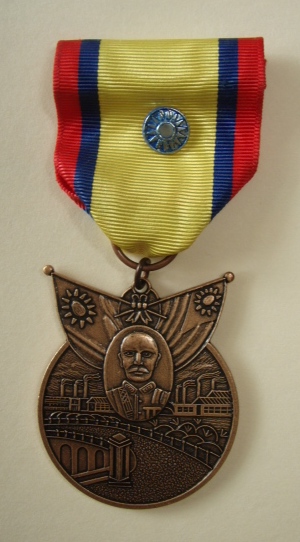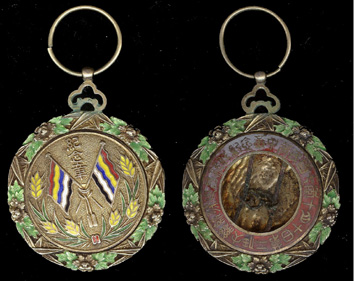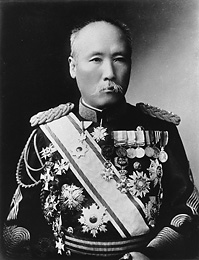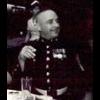-
Posts
448 -
Joined
-
Last visited
-
Days Won
1
Content Type
Profiles
Forums
Blogs
Gallery
Events
Store
Posts posted by Richard LaTondre
-
-
Hi Dick,
That is very interesting. Are you allowed to wear it or is it one of these keep sake type things?
Sun
Yes I am allowed to wear it as it was awarded by an allied country for military services provided. It is worn in last place after all U.S. awards.
This specific award normally has a number on the reverse or in lack thereof a designated blank area for the engraving of any additional data. I also, as well as many other Marines, have received similar awards from other countries such as the Republic of Korea and Vietnam.
Welcome aboard and please tell us about yourself and the medals you collect.
Dick
 0
0 -
Sometimes called the China War, War Memorial Medal, this medal was authorized by the Chinese Nationalist Government for issue to all servicemen and others who assisted the Chinese in their fight against Japan during the second World War. It was awarded to both military and civilian personnel who were directly involved in the war effort. Perhaps the largest single group of Americans to receive this medal were members of the 14th Air Force, the famed "Flying Tigers." This medal was presented to them in a special ceremony during a convention of the 14th Air Force Association held in New Orleans on August 2, 1975. The medals were formally presented to about 200 veterans by the Ambassador of the Republic of China and Anna Chennault, the widow of General Claire L. Chennault, the former commander of the Flyng Tigers.
Establishing Authority
This medal was established as the Medal in Commemoration of Victory in the Resistance Against Aggression, but is more commonly known as the China War Memorial Medal. It was established by the Republic of China in 1944 and issued October of 1946.
Acceptance by the United States
Acceptance of this medal was authorized in accordance with the provisions of Public Law 80-314, which authorized the acceptance of foreign awards and decorations during World War II for the period of December 7, 1941 through July 24, 1948.
Effective Dates
The effective dates of the China War Medal are December 8, 1941 to September 2, 1945.
Criteria
The China War Memorial Medal was awarded to all members of the Armed Forces of the United States who served in Mainland China, Burma, Vietnam, and Thailand, for at least thirty days between December 8, 1941 and September 2, 1945.
Order of Precedence
This medal is worn behind all foreign decorations. When worn with other foreign service medals, it worn in the chronological order in which they were received.
Devices
No devices are authorized for this medal.
Designer
The design for the China War Memorial Medal was set by the Government of the Republic of China.
Description and Symbolism
Obverse
The front of the medal shows the Marco Polo Bridge, which spans the Yeng-ding river. The bridge symbolizes the outbreak of the Sino-Japanese War, because Japan's full-scale aggression against China began on July 7, 1937, near Peking in a small town called Lukou-Chiao, which means "Marco Polo Bridge." Above the bridge are the crossed flags of the Republic of China and her Armed Forces, symbolizing unity of the Chinese people. The portrait between the flags is that of Chiang Kai-shek, who was Chairman of the Military Committee of the National Government during the war. In the background over the bridge can be seen a city with smokestacks, alluding to the return of peaceful pursuits.
Reverse
The reverse of the medal contains a raised panel with the impressed notation, No. A, presumably to allow for the engraving of either the recipient's name or an issuing serial number. Above and below this panel are Chinese characters indicating the nature and purpose of the medal.
Ribbon
The ribbon contains a center stripe five-eighths of an inch wide, bordered on either side by a blue stripe one-eighth of an inch wide, and a red edge stripe three-sixteenths of an inch wide. A round metal Chinese sunburst emblem is placed in the center of the ribbon.
I was awarded this medal however there is a device attached to both the medal drape as well as the ribbon. it is the silver and blue miniature Nationalist seal. I notice that the People's Revolutionary Military Museum has a copy of this medal in its listing on page 112 of their catalog. A hole appears on the drape of the ribbon where this device should be.
Dick
0 -
The defence forces have a range of ribbons, but no medals. See:
Thanks for the nice reference. I know you probably don't know the answer as you didn't design the 'chart', but what is the differnce between the first ribbon to the left in the top row and the fourth ribbon to the right in the third row.
Is this source you have provided a seller of ribbons? I think I may have run across him when I was helping John Royston find a maker of rosettes.
Dick LaTondre
0 -
You might try http://www.jacar.go.ip/english/index.html
sorry. It's http://www.jacar.go.jp/english/index.html
0 -
May I ask what source you are using to try and ID this fellow????
It sounds like I should probably get me one of those!!!!

Thanks
JC
You might try http://www.jacar.go.ip/english/index.html
0 -
Here's a pic of Col Melton receiving the medal . . . looks like the third class
http://www.okinawa.usmc.mil/Public%20Affai...0725-melton.jpg
Thanks David. As you probably already know, Japan is one of the many countries that award the medals class based on the recipient's rank.
Dick.
P.S. what was the source of the excellent photo. The Japanese Colonel(?) awarding the medal has quite a rack!
0 -
A Marine stationed on Okinawa was recently awarded the Order of the Rising Sun:
Marine on Okinawa Receives Japan?s Oldest Award
Okinawa, Japan-based Marine combat correspondent Lance Corporal Monty Burton reported that Colonel Danny L. Melton was awarded the Order of the Rising Sun at the Ground Staff Office Ministry of Defense in Tokyo, July 11th. It was presented by Japanese General Ryoichi Oriki, Japan Ground Self Defense Force chief of staff. Melton won the award for his distinguished service in building positive relations between the Japan Ground Self Defense Force and the U.S. Marine Corps during his time as the main attach? at the U.S. Embassy in Tokyo. Melton is now the assistant chief of staff for community policy and planning, Marine Corps Base Camp Butler, Okinawa.
The Order of the Rising Sun is Japan?s oldest award, first instituted in 1875, and is awarded to foreigners, both military and civilian, who have made outstanding contributions to promote foreign relations with Japan. Other Marines who have had this prestigious honor bestowed include the 33rd Commandant of the Marine Corps, General Michael W. Hagee, and General Peter Pace, former chairman of the Joint Chiefs of Staff.
LEATHERNECK OCTOBER 2008
0 -
Paul:
The chemical process required to restore these items to their original state would be far to invasive.
Your Great Grandfather saw fit to plate these items so if, as you say, you will never sell these pieces, keep them as he loved them
If he had carved his initials in the stock of his carbine I don't think you would want to sand them out and re-finish the stock.
They were his and he loved them the way they were.
Just my thoughts,
Semper Fi
Dick
0 -
Please put me on your list for a copy. Hope you get the copyright issue worked out.
Hugh
Roger that! As I mentioned to Hugh, there is a gentleman from the Chinese mainland, that is publishing some of my photos that are in the forthcoming book and I would like to inform him, that it is illegal. But based on his location . . . . .?
0 -
Richard, Hope you get the warlord book moving soon. I saw your latest at OMSA, and if you put the same level of attention into warlords, we'll have a very valuable resource.
Best,
Hugh
Thank you for your kind words Hugh. I hope to finish it this year. It should contain the Imperial Issues, The Republic Issues, The War Lord Issues, and some of the Nationalist Kuomintang Issues. Of concern to me at this time. is that a member of the Gentleman's Military Interest Club is publishing some of my photos.
Richard
0 -
back
Unfortunately, you have reproduced copyrighted images that were lifted from either the OMSA Medal Database site or from my CD of the Harry Mohler collection. These images can only be used when given the proper attribution.
Richard LaTondre
0 -
Wu Peifu
These are great photographs! Thanks for sharing them with us.
Richard
0 -
..
Is there a possibilty that this is not a Japanese bayonet . . . . . . . .?
0 -
It's the Coronation Medal in silver (was also issued in gold). My book is all in Thai (which I don't read), but I'm fairly confident this is the medal for the current king, Bhumibol. (Rama IX)
I believe that you are correct. It is the Silver Coronation Medal Rama IX. 35mm in diameter with white ribbon and alternating 5mm white/yellow stripes. It is in the Harry Mohler collection at Stanford. There is also, of course, the Gold Coronation Medal of similar design.
Best Regards
Richard LaTondre
0 -
I'll need to exchavate my copy of the appropriate part of Morton & Eden's sale of the ANS collection. To date, this is the best source of pre-Revolutionary Chinese medals. In the interim, you may want to check out the OMSA database, where many of the M&E images are posted (along with others, some of which have ID issues).
Perhaps you could share the images on the OMSA database that have ID issues.
I would be happy to examine them.
Richard
0 -
It looks as if he is also wearing the Boxer Rebellion medal and was under the command of General Baron Fukushima.
Dick
That makes it much more clear. He is not wearing the Boxer Medal it is the 1894-95 War Medal.
Thanks
Dick
0 -
Three more pieces:
The fourth medal in your group is the General Cao Kun Commemorative Portrait Medal.
He was the long time boss of Wu PeiFu. I have to get that book on Chinese warlord medals published!
Dick
0 -
This is Colonel Nagake, Chief of Staff of the 5th Division.
Picture taken in Peking 1901.
It looks as if he is also wearing the Boxer Rebellion medal and was under the command of General Baron Fukushima.
Dick
0 -
on the other side:
Hi Enzo!
What an amazing collection. With one exception, these are all Merit Medals awarded by the most powerful warlord of the Republican period, Wu Peifu. The first medal is a Wu Peifu Merit Medal (55x51mm), The second is a Wu Peifu Marksmanship Medal 40 x 47mm), The third I have not as yet identified (it is old), the fourth is a Wu Peifu Merit Medal 38x52mm), and the sixth one is also a Wu Peifu Merit Medal. Wu was a major warlord during this time and many scholars believe he was backed by U.S. and British interests. He fought the Nationalists as well as the Communists and was offered the puppet rule as monarch in North China by the Japanese government.
He was born in Shandong Province in Eastern China in 1874 and died in 1939. These medals were issued prolifically to his followers during the period 1916 through 1927. A good description of the warlord activity during the period can be found in Edward A. McCord's book "The Power of the Gun"
Dick LaTondre
0 -
Here is a medal with a very similar central design.
However no Id at the mo.
Unfortunately That is a Chinese Communist replica complete with the standard Communist drapery.
0 -
Hello everyone
Would anyone have an idea of what this (incomplete) medal might be. I am sorry the reverse seems to lack part of its center.

It is quite large (42mm-22grs) and heavy in what seems to be enameled glit metal (possibly silver, no hallmark found). The enamel finish is very good.
Information will be gratefully received.
Greetings
Veteran
A Photo of the complete medal may be seen on the OMSA Medal Data Base:
0 -
Hello everyone
Would anyone have an idea of what this (incomplete) medal might be. I am sorry the reverse seems to lack part of its center.

It is quite large (42mm-22grs) and heavy in what seems to be enameled glit metal (possibly silver, no hallmark found). The enamel finish is very good.
Information will be gratefully received.
Greetings
Veteran
Enzo is the closest!
The medal is President Xu ShiChang's Inauguration medal. It should be 56 x 43 mm. The chinese characters read "10 October, the seventh year of the Republic of China, the second president Xu ShiChang Inauguration Commemoration Medal" Issued, I believe, in 1918. The missing ribbon is red with white edge stripes 37mm wide.
The reverse shows the two Republic flags joined by a binding rope at the crossing with six sheaves of wheat. The three Chinese characters at the top denote "Commemorative Medal"
Dick
I would post an image from the Mohler Collection but I have dificulties posting on this website.
0 -
I have it in mind as a longer term project. Before I do that I want to write the definitive book in English on Japanese orders and medals to replace Peterson.

Paul
Paul:
We can never forget this gentleman, General, Baron Fukushima one of the true last Samurais that made the longest reconnaisance trip in history from Berlin to Vladivostok, prior to declaring war on Russia.
Best Regards,
Dick

 0
0 -
Jerome,
Excellent photo. The Golden Kite is a 5th Class since there is no rosette on the ribbon. His uniform is the service dress uniform for an officer in a mounted service, most likely cavalry.
Cheers,
Paul
Hi Paul! I have a question. How can that Golden Kite be identified positively as a 5th Class? I understand that the rosette was not introduced to differentiate the two classes untill 1937. Is this an incorrect assumption on my part? The only difference between the two is that the 4th Class is gold plated. I had the good fortune of acquiring one last month from a gentleman in Colorado. To me, the 4th Class is one of the most rare of the series.
Best Regards,
Dick
0




Researching an Individal?
in Japan
Posted
Yes Dieter - try http://www.jacar.go.jp and good luck,
Dick